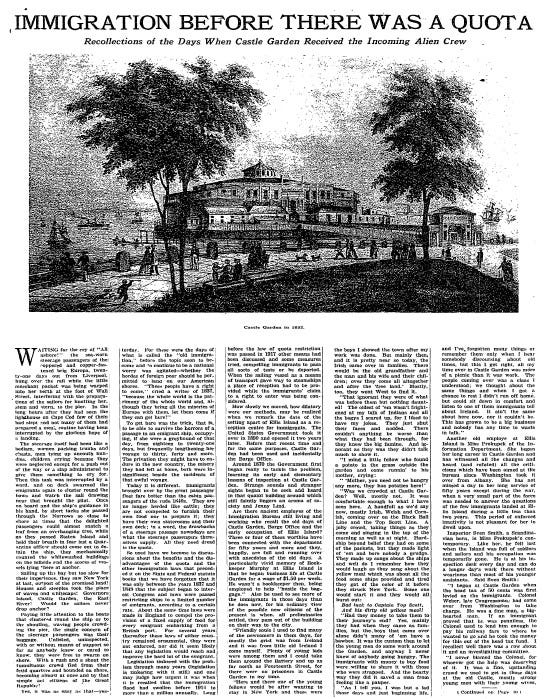Immigration Before There Was a Quota
The Immigration Act of 1924 banned immigrants from Asia, set national quotas for immigrants from eastern and southern Europe, and allowed entry only to those with visas.
That May, New York Times Magazine published a history article about what immigration used to be like.
Unlisted, uninspected, with or without means of support so far as anybody knew or cared to know, they were free to swarm on shore. With a rush and a shout the tumultuous crowd fled from their fetid quarters and bounded on shore, becoming almost at once and by that simple act citizens of the Great Republic!
Yes, it was as easy as that — yesterday.
But things had changed.
Today it is different. Immigrants brought over by the great passenger fleet fare better than the cabin passengers of the rude 1840s. They are no longer herded like cattle; they are not compelled to furnish their own food nor to prepare it; they have their own staterooms and their own deck; in a word, the drawbacks of a steerage passage nowadays are what the steerage passengers themselves supply. All they need dread is the quota.
The 1924 law's national quotas remained the primary U.S. immigration law until they were heavily revised in 1952, until national quotas were eliminated entirely in 1965, effective in 1968.
But a few of the 1924 law's provisions still remain on the books, namely the official establishment of U.S. Border Patrol, now known as Customs and Border Patrol (CBP).
Immigration Before There Was a Quota
Published: Sunday, May 18, 1924


